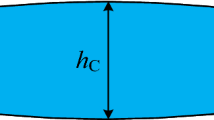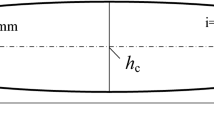Abstract
Based on the complex characteristics of nonlinearity, strong coupling, and multi-disturbance, it is challenging to develop accurate mathematical models for strip rolling systems which are limited by the degree of fitting between mathematical models and real models. A new class of solutions based on machine learning (ML) models was proposed to predict and diagnose the target variables for hot rolling, and their feasibility was fully demonstrated by analysing experimental data. In addition, the particle swarm optimization (PSO) algorithm was employed to optimize the proposed models to enhance generalization performance. By comparison with artificial neural networks (ANNs) and regression trees (RTs), results show that the support vector machine (SVM) model achieves the best prediction performance, with a root-mean-squared error (RMSE) and a correlation coefficient (R) of 1.5725 and 0.9809, respectively. Also, diagnostic results clearly demonstrate that 97.83% of prediction data have an absolute error of less than 4.0 μm. Therefore, the ML method based on data driven can be considered an effective solution to manage complex engineering problems. In addition, simulation results can achieve real accuracy requirements well and have important reference significance and value for practical applications when improving the quality of shape control.








Similar content being viewed by others
Data availability
The authors confirm that the data and material supporting the findings of this work are available within the article.
References
Gao Y, Cai P, Chen F, Qin R (2017) Study on temperature rise modeling of main motor of hot rolling mill based on support vector machines. Appl Mech Mater 870:427–431. https://doi.org/10.4028/www.scientific.net/amm.870.427
Servin Castañeda R, Equihua Guillen F, Torres Gonzalez R, Facundo Arzola IA (2013) Development of simple equation for calculating average wear of hot strip mill work rolls. Ironmaking Steelmaking 41:369–376. https://doi.org/10.1179/1743281213Y.0000000162
Zhang XM, Jiang ZY, Tieu AK, Liu XH, Wang GD (2002) Numerical modelling of the thermal deformation of cvc roll in hot strip rolling. J Mater Process Technol 130(02):219–223. https://doi.org/10.1016/S0924-0136(02)00736-7
Aljabri A, Jiang ZY, Wei DB, Wang XD, Tibar H (2014) Thin strip profile control capability of roll crossing and shifting in cold rolling mill. Mater Sci Forum 773–774:70–78. https://doi.org/10.4028/www.scientific.net/msf.773-774.70
Li YL, Cao JG, Kong N, Wen D, Ma HH, Zhou YS (2017) The effects of lubrication on profile and flatness control during ASR hot strip rolling. Int J Adv Manuf Technol 91:2725–2732. https://doi.org/10.1007/s00170-016-9910-8
Wang QL, Sun J, Liu YM, Wang PF, Zhang DH (2017) Analysis of symmetrical flatness actuator efficiencies for UCM cold rolling mill by 3d elastic–plastic FEM. Int J Adv Manuf Technol 92:1371–1389. https://doi.org/10.1007/s00170-017-0204-6
Rosenblatt F (1958) The perceptron: a probabilistic model for information storage and organization in the brain. Psychol Rev 65(6):386–408. https://doi.org/10.1037/h0042519
Wang ZH, Gong DY, Li X, Li GT, Zhang DH (2017) Prediction of bending force in the hot strip rolling process using artificial neural network and genetic algorithm. Int J Adv Manuf Technol 93:3325–3338. https://doi.org/10.1007/s00170-017-0711-5
Zhao JW, Wang XC, Yang Q, Wang QN, Liu C, Song GY (2019) High precision shape model and presetting strategy for strip hot rolling. J Mater Process Technol 265:99–111. https://doi.org/10.1016/j.jmatprotec.2018.10.005
Gao WL, Lu XM, Peng YJ, Wu L (2020) A deep learning approach replacing the finite difference method for in situ stress prediction. IEEE Access 99:1–1. https://doi.org/10.1109/ACCESS.2020.2977880
Nagra AA, Han F, Ling QH, Mehta S (2019) An improved hybrid method combining gravitational search algorithm with dynamic multi swarm particle swarm optimization. IEEE Access 7:50388–50399. https://doi.org/10.1109/ACCESS.2019.2903137
Deng JF, Sun J, Peng W, Hu YH, Zhang DH (2019) Application of neural networks for predicting hot-rolled strip crown. Appl Soft Comput 78:119–131. https://doi.org/10.1016/j.asoc.2019.02.030
Avalos O (2020) GSA for machine learning problems: a comprehensive overview. Appl Math Model 92:261–280. https://doi.org/10.1016/j.apm.2020.11.013
Bagheripoor M, Bisadi H (2013) Application of artificial neural networks for the prediction of roll force and roll torque in hot strip rolling process. Appl Math Model 37(7):4593–4607. https://doi.org/10.1016/j.apm.2012.09.070
Shen CG, Wang CC, Wei XL, Li Y, Zwaag S, Xu W (2019) Physical metallurgy-guided machine learning and artificial intelligent design of ultrahigh-strength stainless steel. Acta Mater 179:201–214. https://doi.org/10.1016/j.actamat.2019.08.033
Li XG, Lord D, Zhang YL, **e YC (2008) Predicting motor vehicle crashes using support vector machine models. Accid Anal Prev 40:1611–1618. https://doi.org/10.1016/j.aap.2008.04.010
Andrew AM (2001) An introduction to support vector machines and other kernel-based learning methods. Kybernetes 30(1):103–115. https://doi.org/10.1108/k.2001.30.1.103.6
Wang ZH, Liu YM, Gong DY, Zhang DH (2018) A new predictive model for strip crown in hot rolling by using the hybrid AMPSO-SVR-Based approach. Steel research international 89(7). https://doi.org/10.1002/srin.201800003
Liu X, Athanasiou CE, Padture NP, Sheldon BW, Gao HJ (2020) A machine learning approach to fracture mechanics problems. Acta Mater 190:105–112. https://doi.org/10.1016/j.actamat.2020.03.016
Malvoni M, De Giorgi MG, Congedo PM (2016) Photovoltaic forecast based on hybrid PCA-LSSVM using dimensionality reducted data. Neurocomputing 211:72–83. https://doi.org/10.1016/j.neucom.2016.01.104
Huang YM, Wu D, Zhang ZF, Chen HB, Chen SB (2017) EMD-based pulsed TIG welding process porosity defect detection and defect diagnosis using GA-SVM. J Mater Process Technol 239:92–102. https://doi.org/10.1016/j.jmatprotec.2016.07.015
Xu S, An X, Qiao XD, Zhu LJ, Li L (2013) Multi-output least-squares support vector regression machines. Pattern Recogn Lett 34(9):1078–1084. https://doi.org/10.1016/j.patrec.2013.01.015
Vidyasagar M (2015) Statistical learning theory and randomized algorithms for control. Control Systems IEEE 18(6):69–85. https://doi.org/10.1109/37.736014
De’ath G, Fabricius K, E, (2000) Classification and regression trees: a powerful yet simple technique for ecological data analysis. Ecology 81(11):178–3192. https://doi.org/10.1890/0012-9658(2000)081[3178:CARTAP]2.0.CO;2
Scott CD, Willett M, Nowak RD (2003) Classification or regression Trees. IEEE Acoustics Speech and Signal Processing 4(6):153–156. https://doi.org/10.1109/ICASSP.2003.1201641
**n Y (1999) Evolving artificial neural networks. Proc IEEE 87(9):1423–1447. https://doi.org/10.1109/5.784219
Funding
This work is financially supported by National Natural Science Foundation of China (No. 51975043), National Natural Science Foundation of China (No. 52005358), Fundamental Research Funds for the Central Universities (No. FRF-TP-19-002A3), and Fundamental Research Funds for the Central Universities (No. FRF-TP-20-105A1).
Author information
Authors and Affiliations
Corresponding authors
Ethics declarations
Ethics approval and consent to participate
The article follows the guidelines of the Committee on Publication Ethics (COPE) and involves no studies on human or animal subjects.
Consent for publication
This work is approved by all authors for publication.
Conflict of interest
The authors declare no competing interests.
Additional information
Publisher's Note
Springer Nature remains neutral with regard to jurisdictional claims in published maps and institutional affiliations.
Rights and permissions
About this article
Cite this article
Song, L., Xu, D., Wang, X. et al. Application of machine learning to predict and diagnose for hot-rolled strip crown. Int J Adv Manuf Technol 120, 881–890 (2022). https://doi.org/10.1007/s00170-022-08825-w
Received:
Accepted:
Published:
Issue Date:
DOI: https://doi.org/10.1007/s00170-022-08825-w




